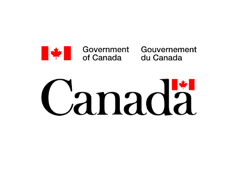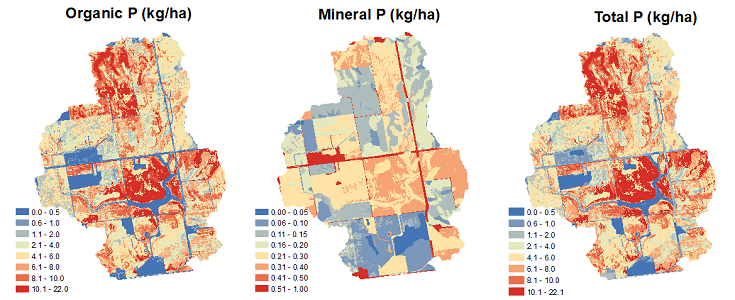CANWET™ is an open data, urban and rural, platform (and developed by GREENLAND® since 2003) for cumulative effects analysis and watershed management. CANWET™ is now “Powered by SWAT” and includes open source GIS-software designed to inform decision making around watershed management; integrated water supply and wastewater treatment infrastructure; urban drainage control; and, climate change adaptation. The platform’s ability to accurately calculate hourly water balance, nutrients, erosion sediment, bacteria, water temperatures, dissolved oxygen and other parameters from GIS data, enables CANWET™ to serve as a powerful decision support system. It also includes science-based climate change impact and mitigative Best Management Practices & Low Impact Development analytics, as well as “automated” modelling data calibration and verification capabilities.
The initial versions were completed with support from the Province of Ontario (Canada) to develop the award-winning “Lake Simcoe Protection Plan”. Further tool updates were then used for similar Assimilative Capacity; Watershed Planning; Master Drainage Planning; Water and Wastewater Infrastructure Planning; and, Source Water Protection projects in Canada.
From 201 5 - Present, GREENLAND® and the University of Guelph (Canada) were retained by the Government of Canada to undertake an “Evaluation of Policy Options to Achieve Phosphorus and Nutrient Reductions from Canadian Sources to Lake Erie”. The initial project established an extensive list of the most viable policy options. Subsequent evaluations then examined the effectiveness of all policy options on the basis of achieving nutrient load reduction targets; sustainable cost effectiveness; potential impact to the economy; social acceptance; and, efficiency of implementation. Later projects then considered what initiatives were in place and recommended how gaps might be filled. The main objective was to determine what “best suite of policy actions” could achieve the greatest nutrient load reductions, while also being the most effective in terms of cost, time and social acceptance. A unique analytical and stakeholder engagement approach was undertaken using CANWET™ (v.4) and as a means of quantifying and better understanding the origin / timing of phosphorus loads from the Canadian watershed lands draining to Lake Erie.
5 - Present, GREENLAND® and the University of Guelph (Canada) were retained by the Government of Canada to undertake an “Evaluation of Policy Options to Achieve Phosphorus and Nutrient Reductions from Canadian Sources to Lake Erie”. The initial project established an extensive list of the most viable policy options. Subsequent evaluations then examined the effectiveness of all policy options on the basis of achieving nutrient load reduction targets; sustainable cost effectiveness; potential impact to the economy; social acceptance; and, efficiency of implementation. Later projects then considered what initiatives were in place and recommended how gaps might be filled. The main objective was to determine what “best suite of policy actions” could achieve the greatest nutrient load reductions, while also being the most effective in terms of cost, time and social acceptance. A unique analytical and stakeholder engagement approach was undertaken using CANWET™ (v.4) and as a means of quantifying and better understanding the origin / timing of phosphorus loads from the Canadian watershed lands draining to Lake Erie.
In 2018, GREENLAND® initiated a 4-year software collaboration with the University of Guelph (Canada). The first project included further developing CANWET™ with Artificial Intelligence (machine learning) features, as well as maintaining current capabilities and adding new / proven-science predictive modelling functions available for the “SWAT” analytical engine. “The system will make this information accessible to everyone from government to urban planners and researchers,” says Professor Prasad Daggupati from the University of Guelph. “Users will be able to see spatially what is happening and take appropriate actions.” The project will enable regulatory agencies to reduce the harmful effects that algal blooms have on water quality, fish, and wildlife populations in and surrounding the Great Lakes Basin.

CANWET™ Spatial (HRU Scale) Distribution of Annual Average Phosphorus Forms (Organic, Mineral, Total at the “Site Level”) in a Subwatershed of the Grand River Watershed (Lake Erie Basin – Canada)
The latest “Big Data Version” of CANWET™ (developed by GREENLAND® and University of Guelph) has advanced earlier (desktop) versions by utilizing high performance parallel (cloud) computing functionality. The latest update is a fully functional web-based platform with SWAT modelling tools that can allow greater access by decision makers and stakeholders. Therefore, the new version advances the idea of evaluating cumulative effects in the watershed decision making process rather than the current practice of assessing proposed changes in isolation.
The CANWETTM evolution (since 2018) has taken advantage of high performance computing by porting existing code to a higher performing language and restructuring to operate using parallel or multi-core processing. Therefore, the platform operates now with “dramatic reductions” in simulation runtimes. The reduced runtimes also facilitated the use of new automatic calibration and verification routines for SWAT model setups – thereby, reducing project labour costs. It can also enable faster analytics for “What-If” watershed simulations and if a re-run is requested through the web-based user interface. In 2021 (and beyond), it is anticipated the CANWET™ (machine learning) web-based platform (“Powered by SWAT) will be used more by decision and policy makers in Canada and to understand better the sources of pollution (and related climate change factors). For example, this includes phosphorus which is a major contributor to Lake Erie eutrophication problems. Therefore, CANWET™ can be used to also develop sustainable policies in supporting a wide variety of watershed planning Best Management Practices and ultimately help achieve the Canadian Government’s commitments to reduce 40% phosphorus entering Lake Erie by 2025.
In January 2020, another CANWET™ public – private partnership involving the City of Waterloo (Canada) was initiated by the GREENLAND® and University of Guelph team. This collaboration will develop an integrated model of surface/groundwater interactions using CANWET™ and with available “MODFLOW” databases. The platform will be used by the project team to investigate sodium chloride (salt) transport affecting the Laurel Creek Watershed. The integrated surface / groundwater platform will also take advantage of in-house high performance computing resources to calibrate and validate the CANWET™ model. This second-to-none platform will enable the Municipality to:


______________________________________________________________________________
Town of Collingwood
I would like to recognize the active involvement of the GREENLAND Ground of Companies in the Town of Collingwood's economic development efforts and dedication to helping advance the Town's vision of being a specialized technology hub. Their extensive knowledge of the water technology and land development industries, coupled with their desire to help propel Collingwood forward as a regional economic leader, are very much appreciated.
The Town is proud to have GREENLAND in the community as they have also been key supporters in facilitating introductions with renowned organizations, such as the University of Guelph, University of Waterloo, WaterTAP, Communitech, Canadian Water Resources Association and Canadian Water Network. These organizations and others will help Collingwood secure new businesses with a recreational and healthy lifestyle focus. GREENLAND is also a passionate supporter of youth networking and knowledge transfer initiatives, providing financial assistance for Collingwood Youth Centre initiatives at www.collingwoodyouthcentre.ca
Fareed Amin
Chief Administrative Officer
The Corporation of the Town of Collingwood
April 9, 2018
Interdisciplinary Centre on Climate Change
We are pleased to write in full support of the Canada-Europe Partnership, particularly the collaboration of the Interdisciplinary Centre on Climate Change (IC3) and the
Partners for Action (P4A) network to support incorporation of climate change considerations in the project and assist in testing FLOODVIEW with Canadian municipalities and insurers.
P4A and IC3 are dedicated to consideration of climate change in Canada’s approach to flood risk management, and dissemination of knowledge and best practices to the insurance industry, government decision-makers, and the Canadian public. We look forward to partnering with you to identify effective solutions to minimize urban flooding.
Dr. Daniel Scott
Executive Director
Interdisciplinary Centre on Climate Change
Faculty of Environment University of Waterloo
October 20, 2015
Town of Innisfil
Re: Erosion Control and Advanced Sedimentation Pilot Project
On behalf of the Town of Innisfil, I would like to extend my sincere thanks to Greenland International Consulting Ltd. for their excellent work in completing the Erosion Control and Advanced Sedimentation Pilot Project for the Town of Innisfil, funded in part by the Federation of Canadian Municipalities. This project is a first step in broad-scale implementation of innovative stormwater management technologies in the Lake Simcoe Watershed to address on-going phosphorus and sediment concerns within the Lake.
Over the course of the three-year pilot project, Greenland studied the effectiveness of the Clearflow Group’s Advanced Sedimentation Technologies at an active development site in Innisfil. The project analyzed the performance of Clearflow’s Gel Flocculant Blocks and Treated Geo-Jute at removing fine sediments and nutrients at three stormwater management facilities that discharge to Lake Simcoe. These particles, and the associated nutrients and heavy metals, are traditionally not being removed by conventional stormwater management facilities and cause negative impacts downstream. The results of the project will help Innisfil and other municipalities and agencies to reduce sediment load from entering the environment as a result of construction activities.
As the lead consultant, Greenland coordinated with the Town staff, contractors, sub-consultants and the developer to ensure that open lines of communication were maintained and questions and issues raised were responded to promptly. The Greenland Team’s level of professionalism and thoroughness over the course of the project was valued by the Town.
Glen Switzer
Development Engineer
Town of Innisfil
July 8, 2022